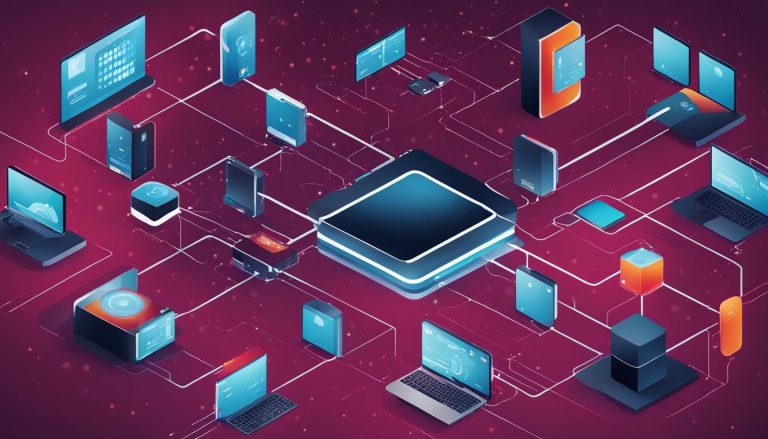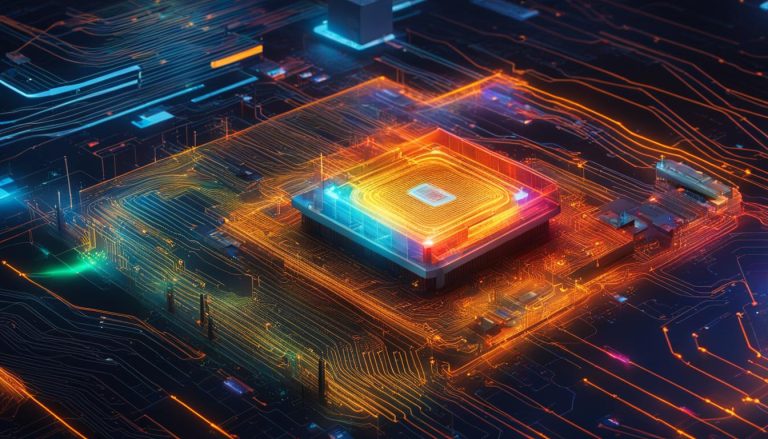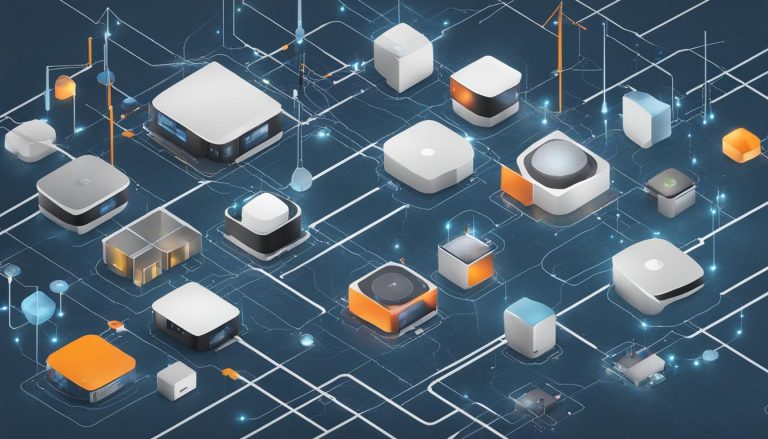Greetings, fellow technology enthusiasts! Today, I invite you on a journey into the fascinating realm of quantum computing, where the boundaries of traditional computing are being pushed to new horizons. In this first section, we will unravel the mystery behind the fundamental building block of quantum computing – the qubit.
Quantum computing, as its name suggests, harnesses the extraordinary principles of quantum mechanics to carry out computations that baffle classical computers. At the heart of this revolution lies the qubit, a quantum bit capable of storing and manipulating quantum information.
So, what exactly is a qubit? In simple terms, a qubit is a quantum counterpart to classical bits that we are familiar with. While classical bits can only exist in two states – 0 or 1, qubits can exist in a superposition of both states simultaneously. This means that a qubit can represent not just 0 or 1, but also a combination of the two.
This ability to exist in multiple states at once is made possible by leveraging the properties of atoms, particles, or other quantum systems. By utilizing phenomena like the superposition of states and entanglement, qubits unlock a vast realm of possibilities for quantum computing.
Key Takeaways:
- A qubit is the fundamental unit of quantum information, replacing classical bits in quantum computing.
- Unlike classical bits, qubits can exist in a superposition of states, representing both 0 and 1 simultaneously.
- Qubits leverage quantum mechanics principles such as superposition and entanglement to store and manipulate information.
- Quantum computing holds immense potential for solving complex problems that are beyond the reach of classical computers.
- Understanding the concept of qubits is crucial for grasping the power and possibilities of quantum computing.
How Quantum Computers Differ from Classical Computers
In the world of quantum computing, there are fundamental differences that set it apart from classical computing systems. Let’s explore these differences and understand why quantum computers have the potential to revolutionize the way we process information.
At the heart of classical computers are bits, which can represent either a 0 or a 1. These bits are the building blocks of all computations. On the other hand, quantum computers utilize qubits, which are much more powerful than classical bits. Unlike bits that can only be in a state of 0 or 1, qubits can exist in a superposition of both states simultaneously. This is made possible by leveraging the principles of quantum mechanics, such as electron spin or light polarization.
The concept of superposition allows qubits to hold and process a vast amount of information in parallel, exponentially increasing the computational power compared to classical bits. It’s like having multiple classical bits working together to perform complex calculations. This is why quantum computers have the potential to solve problems that are currently infeasible for classical computers.
| Quantum Computers | Classical Computers |
|---|---|
| Utilize qubits | Use bits |
| Can exist in a superposition of states | Can only be in a state of 0 or 1 |
| Process information in parallel | Process information sequentially |
| Can solve complex problems | Have limitations in computational power |
As we delve deeper into the world of quantum computing, we will explore the fascinating concepts of quantum superposition and entanglement in the next section, uncovering how these phenomena propel quantum computers to new levels of computational possibilities.
The Power of Quantum Superposition and Entanglement
Quantum superposition and entanglement are fundamental concepts in the world of quantum computing. They are the driving forces behind the immense power and potential of quantum information processing. Let’s explore these concepts and understand why they are so crucial in the realm of quantum computing.
Quantum Superposition
In classical computing, bits can only represent either a 0 or a 1. However, in quantum computing, qubits can exist in a superposition of both 0 and 1 simultaneously. This means that a qubit can be in multiple states at the same time. Quantum superposition allows quantum computers to process a vast amount of information in parallel, leading to exponential computational power.
Superimposed states are at the heart of quantum superposition. These states can be described as a combination of the basic states of a qubit, which are 0 and 1. The actual representation of superimposed states involves complex mathematical equations and the use of matrices, such as the Pauli matrices, to describe them accurately.
Entanglement
Entanglement is another fascinating phenomenon in quantum computing. It refers to the interconnection of two or more qubits, where their states become correlated and dependent on each other. The entangled qubits are no longer described individually but only relative to each other. This means that a measurement performed on one qubit instantly affects the state of the entangled qubits.
The ability to harness entanglement allows for the creation of quantum information networks and enables advanced quantum operations and protocols. It also plays a crucial role in error correction, as entangled qubits can be used to detect and correct errors through precise measurements and operations.
| Quantum Superposition | Entanglement |
|---|---|
| Allows qubits to exist in multiple states simultaneously | Links the quantum states of multiple qubits |
| Enables exponential computational power | Facilitates precise measurements and error correction |
| Described using mathematical equations and matrices | Leads to the creation of quantum information networks |
Quantum superposition and entanglement are intricate concepts that underpin the extraordinary capabilities of quantum computing. Understanding and harnessing these phenomena are essential for advancing the field and unlocking the full potential of quantum information processing.
Quantum Error Correction Codes
In the field of quantum computing, quantum error correction plays a critical role in ensuring the reliability and accuracy of computational processes. As quantum systems are susceptible to various sources of noise and errors, it is essential to implement error correction codes that can detect and correct these imperfections. By employing sophisticated techniques, such as syndrome measurement and error detection, researchers are working towards the development of fault-tolerant quantum computing systems.
One prominent quantum error correction code is the Bit Flip code. This code protects against bit flip errors, which occur when the information stored in a qubit is flipped from 0 to 1 or vice versa due to noise or decoherence. The Bit Flip code introduces redundancy by encoding the information onto multiple qubits. By performing syndrome measurements, errors can be detected, and corrective operations are applied to revert the qubits to their original state. This code enhances the stability of quantum computations and reduces the impact of noise in quantum channels.
Another significant quantum error correction code is the Sign Flip code, which focuses on addressing phase flip errors that can occur during quantum information transmission. These errors change the phase of the qubits, leading to a loss of accuracy. The Sign Flip code utilizes entanglement and syndrome measurements to detect and correct phase flip errors without revealing the transmitted information. By transforming the qubits using the Hadamard basis, corrective operations are applied to ensure the fidelity of the transmitted quantum information.
| Code | Error Type | Correction Mechanism |
|---|---|---|
| Bit Flip Code | Bit flip errors | Redundancy and syndrome measurements |
| Sign Flip Code | Phase flip errors | Entanglement and Hadamard basis |
| Shor Code | Bit flip and phase flip errors | Quantum error correction algorithm |
Lastly, the Shor code is a more advanced error correction code, capable of mitigating both bit flip and phase flip errors simultaneously. Developed by mathematician Peter Shor, this code employs a complex quantum error correction algorithm based on the principles of quantum error correction and quantum entanglement. The Shor code provides a robust framework for achieving fault-tolerant quantum computing and enables the execution of complex computations while minimizing the impact of noise and errors.
Quantum error correction codes, such as the Bit Flip code, Sign Flip code, and Shor code, are instrumental in addressing the challenges posed by decoherence and quantum noise. These codes not only detect and correct errors but also pave the way for the development of fault-tolerant quantum computing systems that can revolutionize various fields of science and technology.
Bit Flip Code
The bit flip code is a quantum error correction code that utilizes redundancy to protect the integrity of information stored on qubits. It is designed to correct bit flip errors that can occur in quantum channels, ensuring the accuracy and reliability of quantum computations. This code is an essential component of quantum error correction, along with other codes such as the sign flip code and Shor code.
To understand how the bit flip code works, let’s consider a simple example. Suppose we want to store a single qubit of information, represented by either 0 or 1, on three physical qubits. The bit flip code encodes this information by adding two additional qubits and entangling them with the original qubit.
“The bit flip code is a quantum error correction code that utilizes redundancy to protect the integrity of information stored on qubits.”
When an error occurs during transmission or storage, the bit flip code allows us to detect and correct it through syndrome measurements. By performing specific measurements on the encoded qubits, we can determine if an error has occurred and which qubit is affected. If an error is detected, corrective operations are applied to revert the qubits to their original state, effectively eliminating the error and ensuring the accuracy of the stored information.
The bit flip code’s use of redundancy and syndrome measurements makes it effective at reducing the impact of noise in quantum channels. By encoding information onto multiple qubits and implementing error correction techniques, the bit flip code enhances the reliability and stability of quantum computations.
| Original Qubit | Encoded Qubits (with redundancy) |
|---|---|
| 0 | 000 |
| 1 | 111 |
Sign Flip Code
The sign flip code is an essential component of quantum error correction, addressing the challenge of phase flip errors in quantum channels. By utilizing the principles of entanglement and error correction, the sign flip code enhances the fidelity of transmitted information, ensuring its accuracy and reliability.
When quantum information is transmitted through a quantum channel, errors can occur due to various factors. One common type of error is the phase flip error, which alters the phase of qubits, potentially leading to incorrect results. The sign flip code solves this problem by encoding the information using entanglement, which links the quantum states of multiple qubits. By performing syndrome measurements on the entangled qubits, errors can be detected without revealing the actual information transmitted. This allows for targeted error correction, specifically addressing the phase flip errors.
The sign flip code employs the Hadamard basis, a set of quantum gates that perform transformations on qubits. By applying these transformations based on the syndrome measurements, the sign flip errors can be corrected, restoring the qubits to their original state. This error correction process ensures the accuracy of the transmitted information, mitigating the impact of phase flip errors and improving the overall performance of quantum computing systems.
Example:
“The sign flip code is a crucial tool in quantum error correction, enabling the correction of phase flip errors in quantum channels. By utilizing entanglement and the Hadamard basis, this code ensures the reliable transmission of quantum information, paving the way for advancements in quantum computing.” – Dr. Quantum
| Quantum Channel | Error Type | Error Correction |
|---|---|---|
| Phase Flip Error | Before Error Correction | Sign Flip Code: Entanglement, Syndrome Measurement, Correction using Hadamard Basis |
| After Error Correction |
Conclusion
Reliable quantum computing is the future of computing. Quantum error correction plays a crucial role in ensuring the accuracy and reliability of quantum computers. By implementing error correction codes such as the bit flip code, sign flip code, and Shor code, we can minimize the impact of errors caused by decoherence and quantum noise.
The development of fault-tolerant quantum computing holds great promise for the future of computing. It will enable us to perform more complex calculations and unlock advancements in various fields. Quantum error correction is a vital component in achieving this goal, as it allows us to overcome the challenges posed by the inherent fragility of quantum systems.
As we continue to advance our understanding of quantum mechanics and improve error correction techniques, we are moving closer to realizing the full potential of quantum computing. It is an exciting time for the field, and the possibilities for innovation and discovery are vast. The future of computing lies in reliable quantum systems that can revolutionize industries and solve problems that are currently beyond the reach of classical computers.
FAQ
What is a qubit?
A qubit is the basic unit of information in quantum computing. It represents and stores information using quantum mechanics principles such as superposition and entanglement.
How do quantum computers differ from classical computers?
Quantum computers utilize qubits, which can exist in a superposition of both 0 and 1 simultaneously, whereas classical computers use classical bits that can have a value of 0 or 1.
What is the power of quantum superposition and entanglement?
Quantum superposition allows qubits to exist in multiple states simultaneously, greatly increasing the amount of information they can hold. Entanglement links the quantum states of multiple qubits, enabling them to be described only relative to each other.
How does quantum error correction work?
Quantum error correction codes, such as the bit flip code, sign flip code, and Shor code, are used to detect and correct errors introduced by decoherence and other quantum noise sources.
What is the bit flip code?
The bit flip code is a quantum error correction code that uses redundancy. It involves encoding the information onto multiple qubits, and if errors are detected through syndrome measurements, corrective operations are applied to revert the qubits to their original state.
What is the sign flip code?
The sign flip code addresses phase flip errors in quantum channels. By encoding the information using entanglement and performing syndrome measurements, errors can be detected and corrected without revealing the actual information transmitted.
Jana is a public relations specialist and writes about all kinds of software products that make our life easier.


